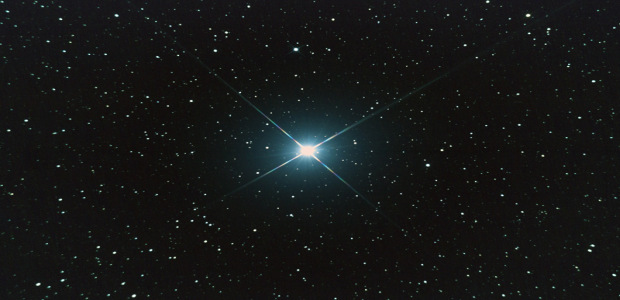We all can recollect the famous nursery rhyme Twinkle Twinkle Little Star which portrayed stars as shining diamonds. Now this seems to be a reality as scientists have discovered an earth-size diamond in space. The white dwarf star is supposed to be the coldest, faintest one discovered till date.
Having an age of 11 billion years old, this white dwarf star is said to be the same age as of the Milky Way. David Kaplan, professor at University of Wisconsin-Milwaukee in the US hails it as a ‘remarkable object’. “These things should be out there, but because they are so dim they are very hard to find”, he said.
Kaplan and his colleagues found this stellar gem using the National Radio Astronomy Observatory’s (NRAO) Green Bank Telescope (GBT) and Very Long Baseline Array (VLBA), as well as other observatories.
The white dwarf does an orbital tango with a pulsar, or a fast-spinning neutron star formed from a supernova explosion that sends out a stream of radio waves like a lighthouse beam. Dubbed PSR J2222-0137, the pulsar lies 900 light-years away from Earth near the constellation Aquarius, and it was first detected using the NRAO’s Green Bank Telescope in West Virginia. Astronomers noticed that the radio signal from PSR J2222-0137 sometimes got delayed because a companion object was passing in front of it, warping space. Studying these delays using the NRAO’s Very Large Baseline Array (VLBA) helped scientists determine that the pulsar has a mass 1.2 times that of Earth’s sun with a companion that has a mass 1.05 times that of the sun.
In a statement made by Bart Dunlap who is a graduate student at the University of North Carolina at Chapel Hill and one of the team members, “Because of the radio observations, we know exactly where to look, so we pointed SOAR (Southern Astrophysical Research) there and collected light for two and a half hours. If there is a white dwarf there, and there almost certainly is, it must be extremely cold,” said Bart Dunlap.
Scientists have calculated the temperature of this star to be at least 2700°. When talking about stellar objects, “cold” is a relative term; this white dwarf is still burning, but that’s 5,000 times cooler than the center of Earth’s sun.
White dwarfs, also termed as degenerate dwarfs are extremely dense end-states of stars that have collapsed. Composed mostly of carbon and oxygen, white dwarfs slowly cool and fade over billions of years. The faint luminescence which is emitted from these white dwarfs are basically stored thermal energy.
With the recent discoveries of exoplanets, this one stands a class apart for sure. There could be many more of these dwarf stars lurking in space, but the fact is that these stars are so faint that they are very difficult to detect.
-end-

Source
- The Astrophysical Journal.

































